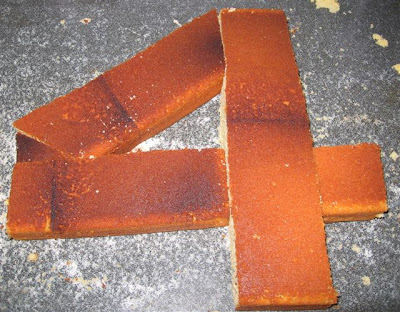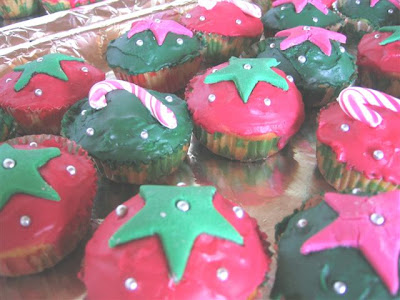My son turned 1 in June when we were in South Africa visiting my parents, and my Mum & I made him a giraffe birthday cake together, which I’ve been meaning to post on the blog for a while now !
We used the ‘standard’ basic cake batter recipe which is a ‘fool proof’ one I got from my Mum – she used the same recipe to bake birthday cakes for my sister and I when we were kids ! (You can see the birthday cake I made for my daughter using this same recipe - when she turned 4 - over here).
Looking back on the photo’s of the cake after I’d taken them, something suddenly struck me though – an important part of the giraffe was ‘missing’ and could so easily have been added on to complete the cake. I can’t believe that I never noticed it on the day ! Can you tell what it is ? If so, leave me a comment below !
Here’s how we made our giraffe -:
Basic (Plain) Cake Batter
200 gm Margarine (or Butter)
1 ½ Sugar
5 Eggs
3 cups Flour
4 tsps Baking Powder
2 cups Milk
Cream the margarine & sugar together. Add the eggs, beating well. Add the sifted flour and baking powder, then the milk. Beat all together until well mixed & pour into 2 greased 23 cm x 23 cm (approx) round cake tins, 1 greased 30 cm x 13 cm (approx) rectangular loaf tin & 4 cup cake cases. Bake at 190’C/375’F/Gas Mark 5 for 30 - 40 minutes until a knife inserted in the centre of the cakes comes out clean. Allow to cool completely before removing from the tins/cases.
Butter Icing
1 cup butter, at room temperature
3 cups icing (confectioners) sugar, sifted
2 – 3 tbsps Milk (Optional)
Brown Food Colouring – a few drops
Yellow Food Colouring – a few drops
Cream the butter and icing sugar together. Add a couple of tablespoons of milk if you need it to be a little smoother. Place a quarter of the mixture into a separate bowl & add a few drops of brown food colouring to it, until you get the desired shade of brown. Add a few drops of yellow food colouring to the remainder of the mixture, until you have the desired shade of yellow.
To Decorate
5 – 6 strips of Liquorice (I used the ‘twisted’ kind)
2 brown Lollipops
How To Assemble Your Giraffe:
Get a stiff, covered board long enough for your giraffe to fit on to (we used a short wooden shelf covered with foil !) First, take the 2 round cakes & position them to make your giraffe’s head and body. Next, cut the cake from the loaf tin to size to make your giraffe’s neck. Use 2 of the cupcakes to make his ears, and the remaining 2 to make his feet.
Ice everything with yellow icing, and then use the brown icing to make ‘spots’ on your giraffe’s body and neck, and on his ears.
Now position 2 liquorice strands between the body and feet portions to create the legs. Use some more of the liquorice to make his mouth, eyes & nostrils and place the 2 lollipops on his head to make the ‘horns’.
Voila - a giraffe is born !


























.JPG)











